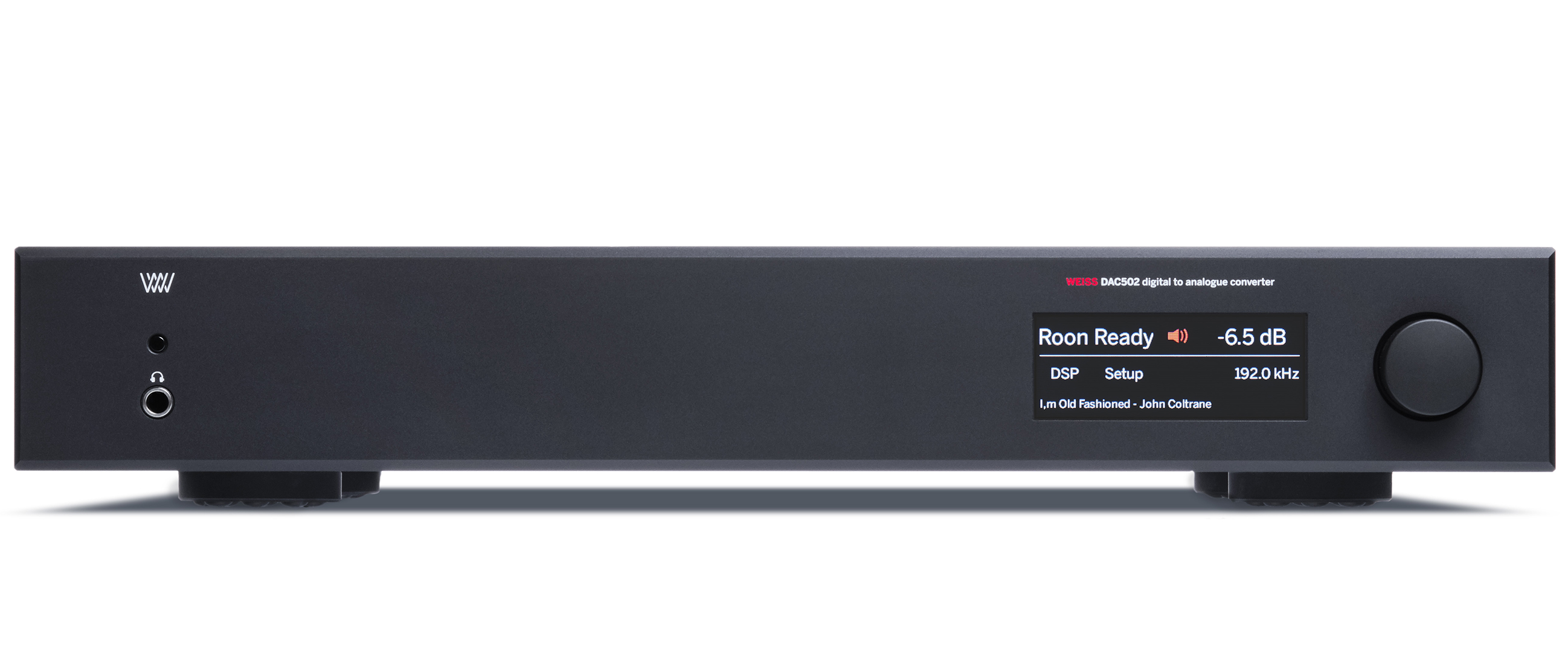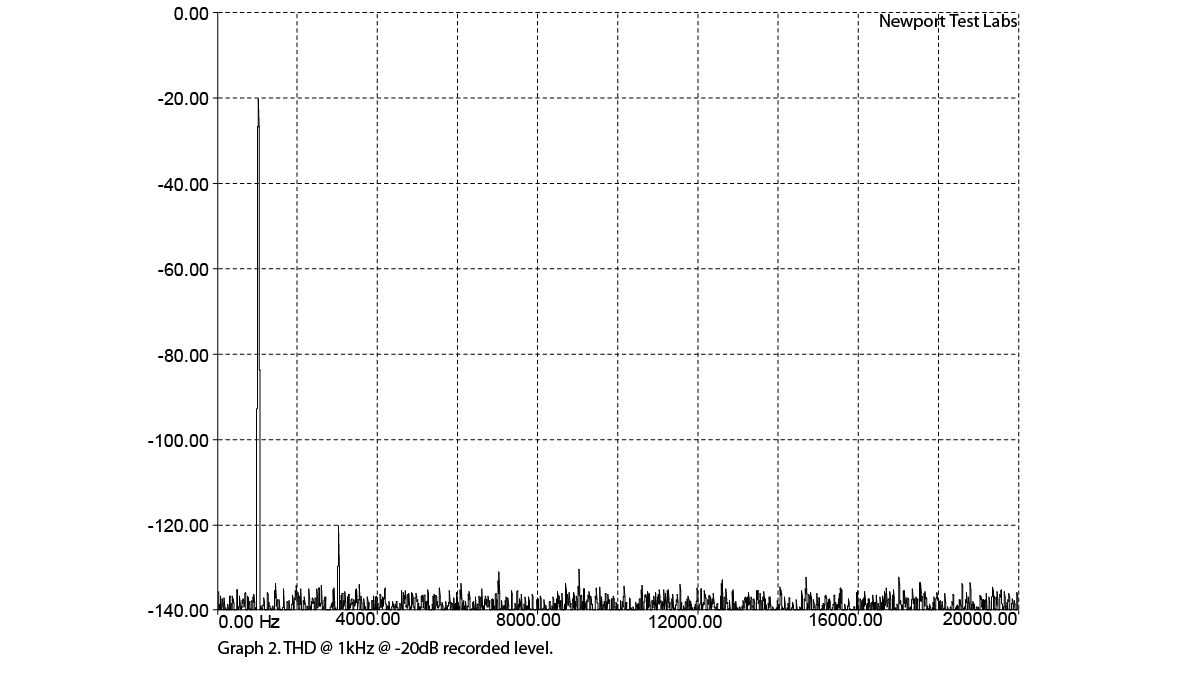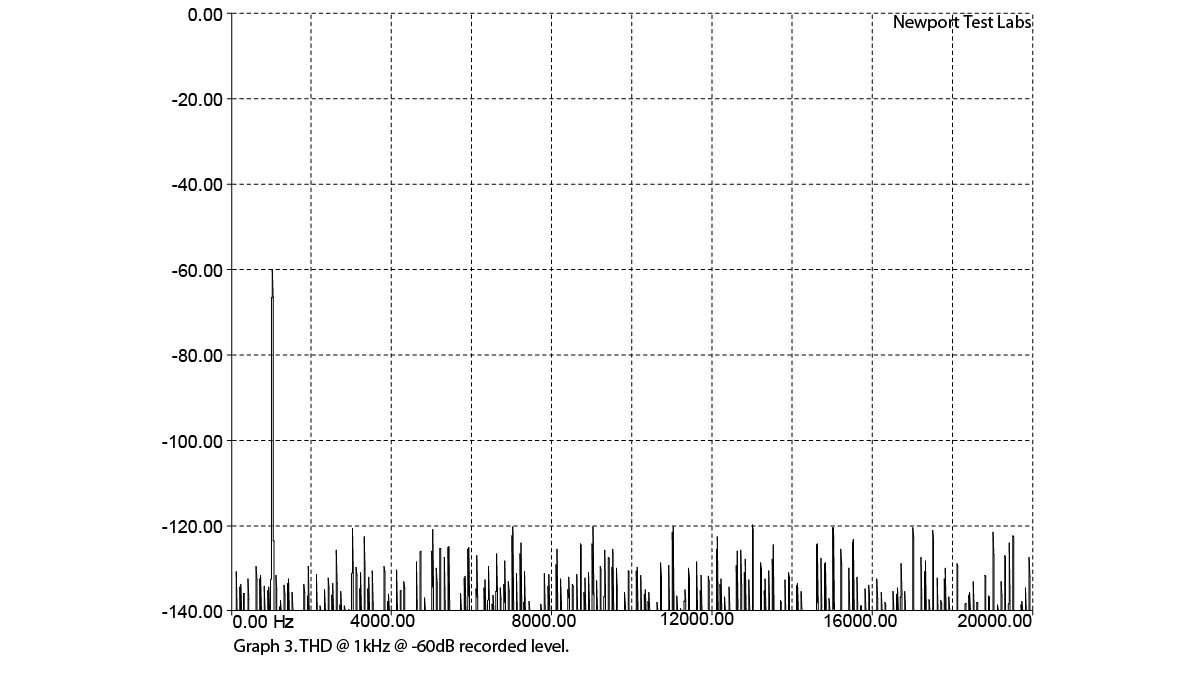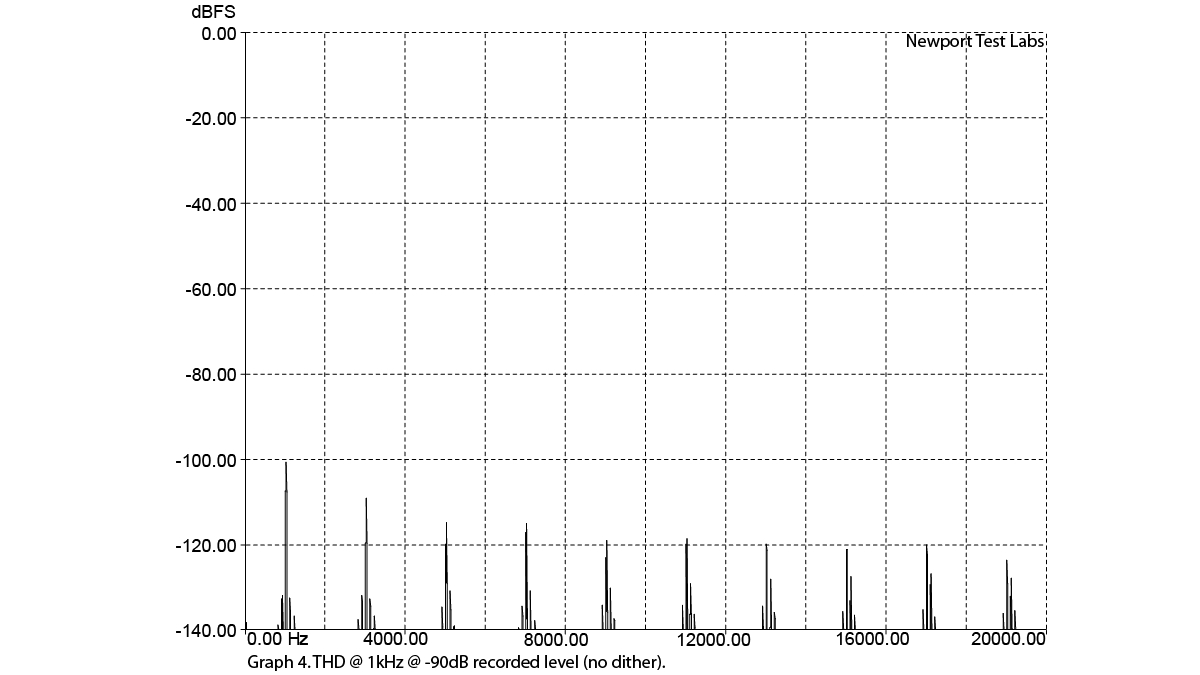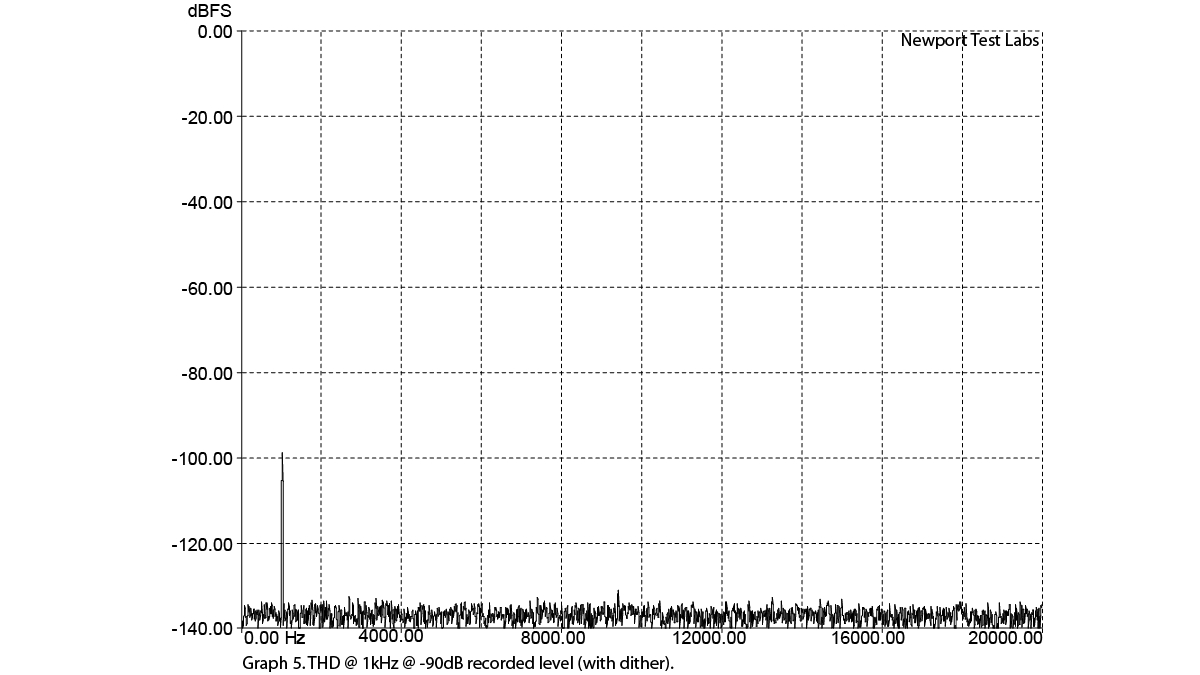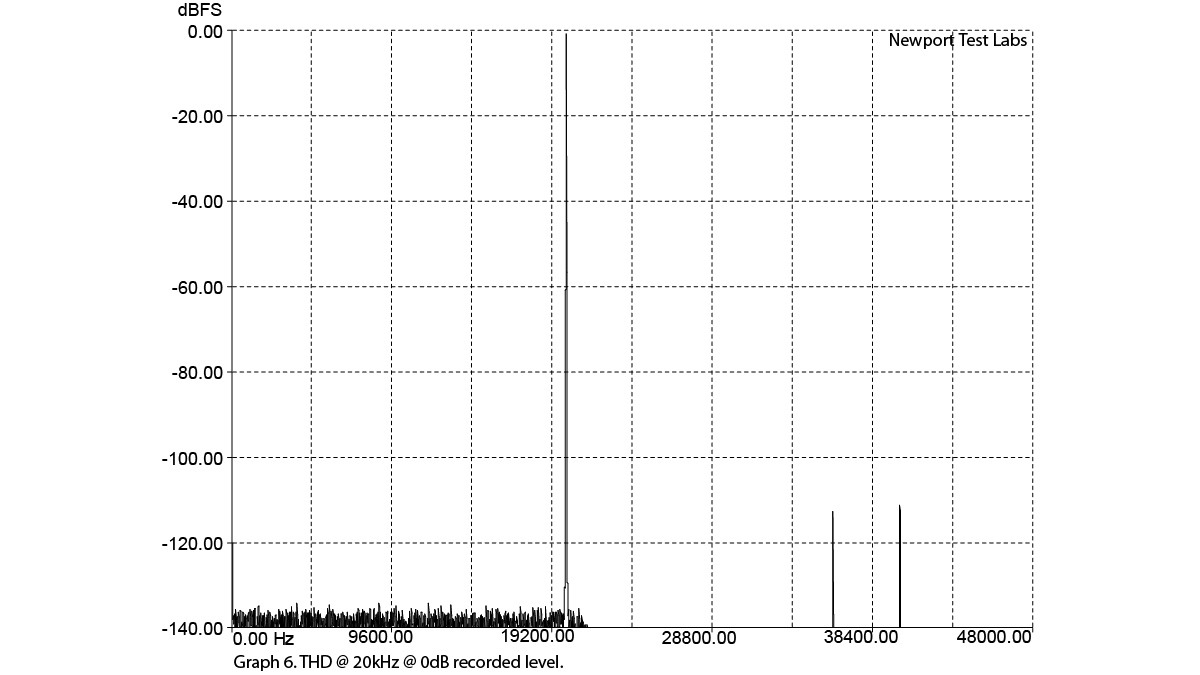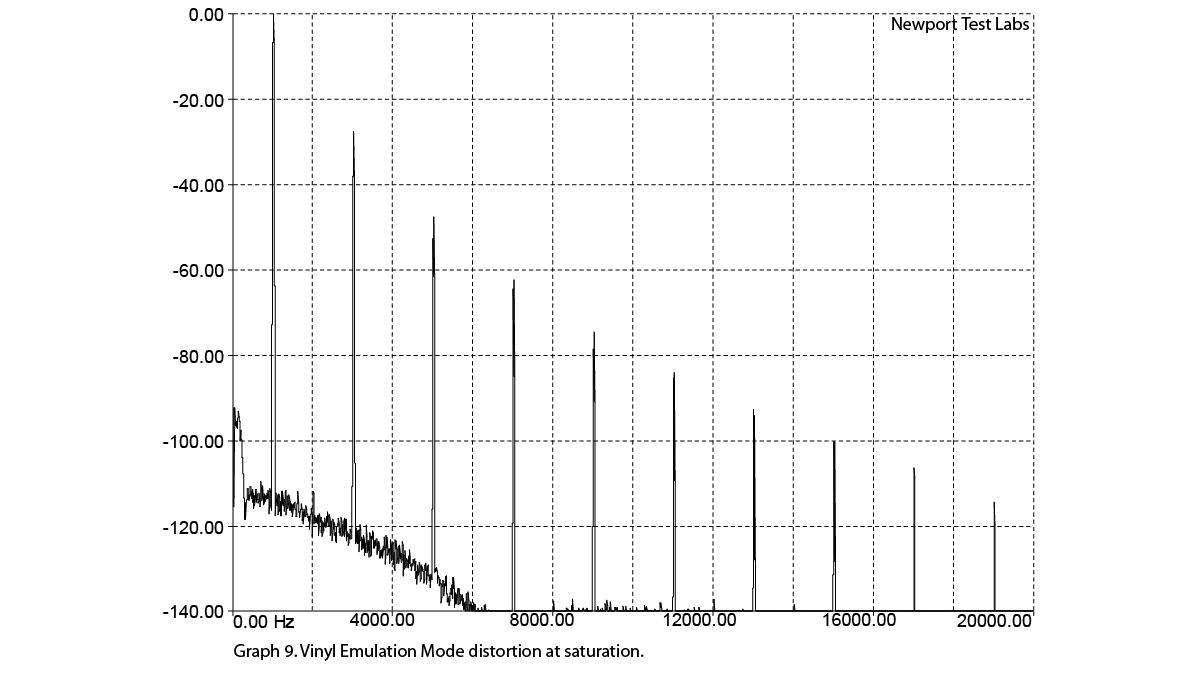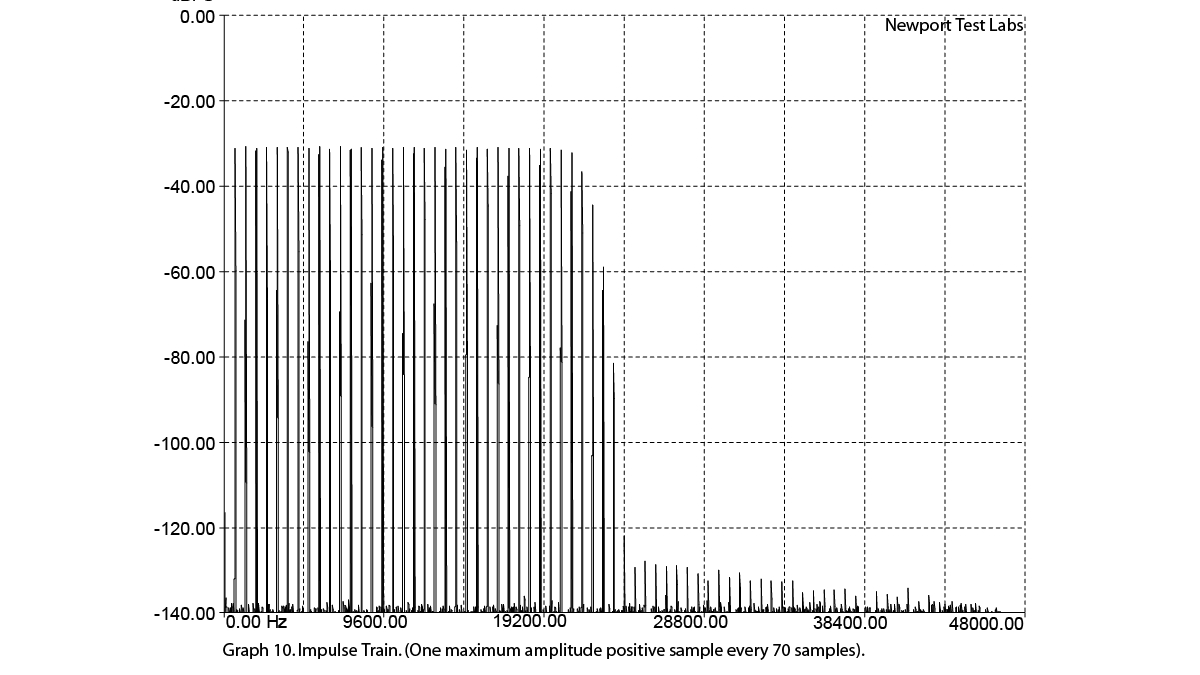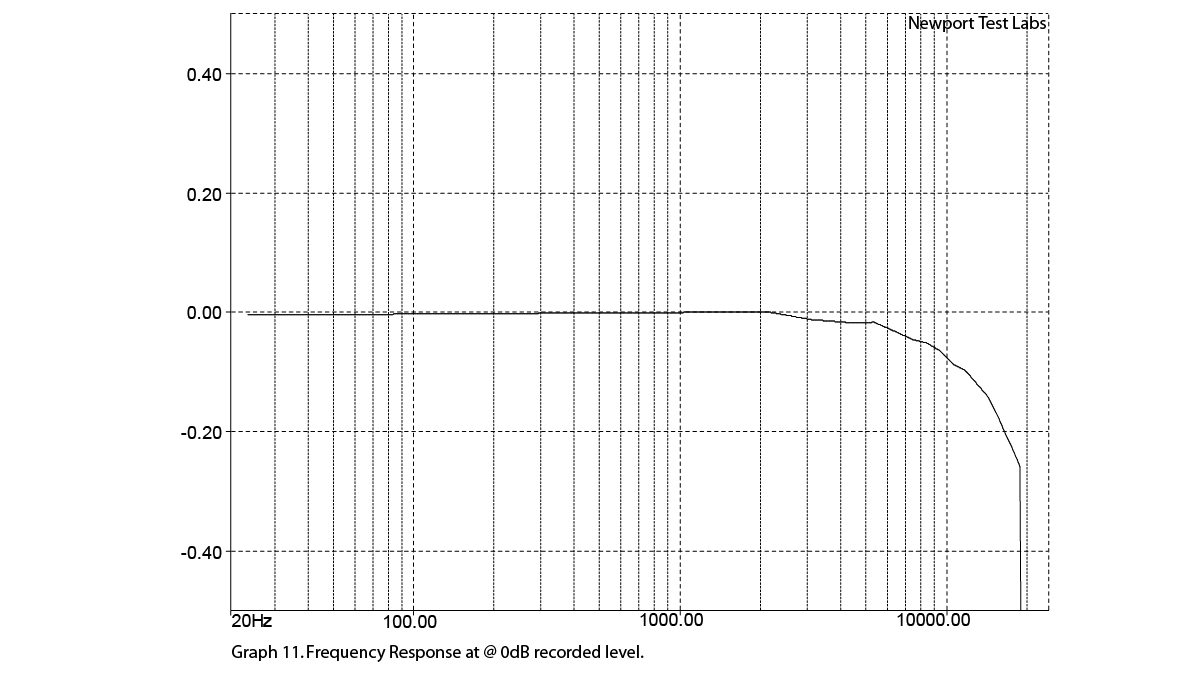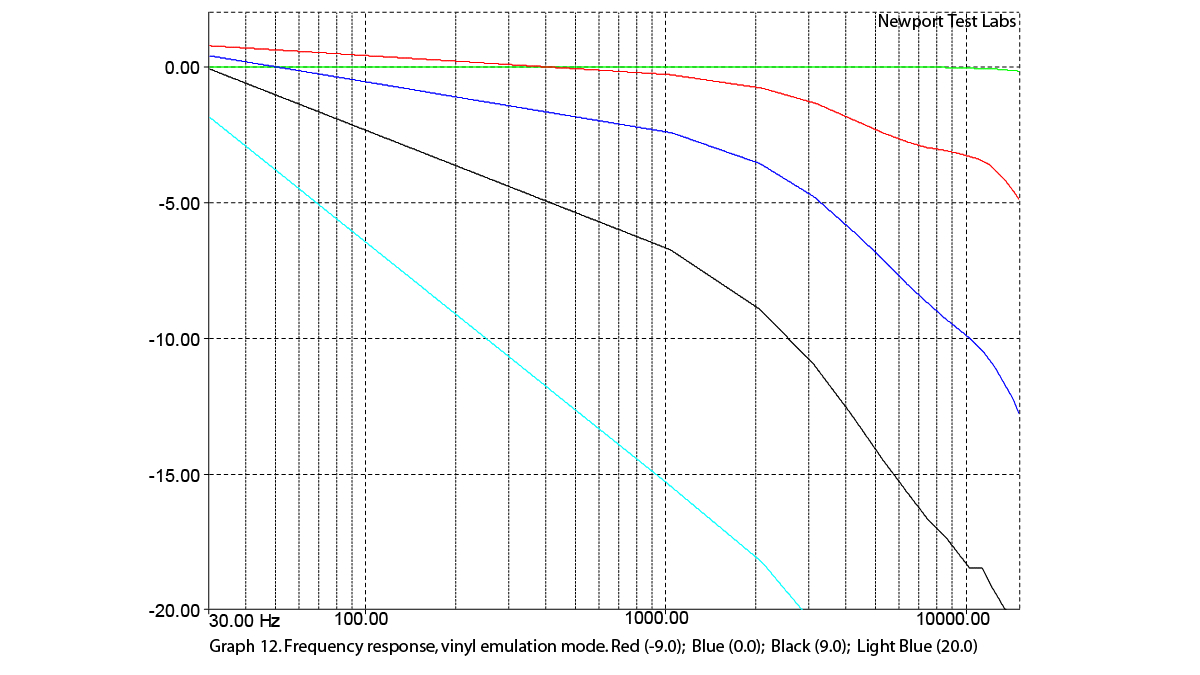What Hi-Fi? Verdict
Not only is the Weiss DAC502 possibly the best DAC we've ever heard, it's relatively affordable compared with other high-end competitors. It packs in every possible feature and extra convenience you could want, and then some, and is futureproofed with its upgradeability.
Pros
- +
Out of this world performance
- +
Incredible flexibility
- +
Upgradeability
Cons
- -
Fixed filtering
- -
Small screen
Why you can trust What Hi-Fi?

This review and test originally appeared in Australian Hi-Fi magazine, one of What Hi-Fi?’s sister titles from Down Under. Click here for more information about Australian Hi-Fi, including links to buy individual digital editions and details on how best to subscribe.
You can tell that designer Daniel Weiss has spent his life at the creative end of audio engineering, in the control room of a studio, because the Weiss DAC 502 isn’t so much a DAC as a creative tool that allows you to modify what’s going through it to best suit your system, your hearing and your preferences in music. It’s so much more than ‘just a DAC’. And if you need any more proof about Weiss’s background, there’s the fact that he’s the proud winner of a Grammy, awarded to him for Special Merit (Technical).
The Weiss DAC 502 reviewed here is listed in Weiss’s catalogue as a DSP D/A Converter and Network Renderer, but that description understates its abilities by an enormous margin, because it’s an enormously complex device that’s capable of parametric equalisation, room equalisation, crosstalk cancellation, vinyl emulation, de-essing, dynamics compensation, balance, volume and tone control and much, much more.
It also includes a fabulous ‘constant volume’ circuit that ensures the volume level of your system will remain the same from track to track, which is a boon to those of us who like to play music in the background whilst entertaining. Plus its firmware is continuously upgradable, so Weiss can add new features and processes at any time to any of these models.
There are so many options that it can take some time to set them all and so if you want different settings for different scenarios, re-setting could become a pain, so as the pièce de résistance, Weiss has included a “Snapshot Mode” so that after you have set the parameters for each of these functions, they can be saved and recalled at the touch of a button.
Equipment
The simplicity of the Weiss DAC 502’s front panel belies the complexity of what lies beneath, but thanks to the sophistication of the software, the DAC 502 is still very easy to use because it can be totally controlled either by the LCD touch screen and rotary knob on the front panel, by the handsome infra-red remote control that comes supplied with it, or via a built-in web interface (to access which you only need enter the address 'http://dac502-serial number.local' into your web browser).
But at its heart, the Weiss DAC 502’s primary function is to operate as a DAC, so let’s look at its capabilities in this regard. It has five digital inputs, all of which accept professional AES/EBU or consumer (S/PDIF) digital signals via XLR, RCA, Toslink, USB (Type B) and Ethernet inputs. The AES/EBU and S/PDIF inputs accept 44.1kHz, 48kHz, 88.2kHz, 96kHz, 176.4kHz, and 192kHz signals up to 24-bits.
The USB and RJ45 Ethernet inputs do all those same sampling rates, but add 176.4kHz, 192kHz, 352.8kHz, 384kHz, DSD64, and DSD128 as well. The optical (Toslink) input does only 44.1kHz, 48kHz, 88.2kHz, and 96kHz rates.
The latest hi-fi, home cinema and tech news, reviews, buying advice and deals, direct to your inbox.
There are no digital outputs, so whatever digital signal you input must come out as analogue, which it can do via the front-panel headphone output, which can be used ‘straight’ or routed through a crossfeed circuit (about which more later), or from XLR (balanced) or RCA (unbalanced) outputs on the rear panel. There’s also a four-pin balanced headphone output on the rear panel.
If you use the XLR outputs (which would be my preference) you can adjust the maximum output voltage through four different settings – 0dB, –10dB, –20dB and –30dB which the specifications say will result in maximum output voltages of 6.8-volts, 2.2-volts, 0.68-volts and 0.22-volts (but see the test results measured by Newport Test Labs at the end of this review).
Weiss says that the setting you use should be dictated by the input impedance of the amplifier you’re using with the DAC 502. They say it should be 0dB if the amplifier’s input impedance is 900Ω or more, –10dB if it’s 100Ω or more, –20dB if it’s 60Ω or more and –30dB if it’s 40Ω or higher. You can see from this that Weiss’s background in studio equipment design, which relies on precise impedance and voltage matching, has also crept into his domestic designs. Even if you use the RCA outputs, you also have four volume settings available.
Arguably far more useful, given the enormous variations in headphone impedance, is that you also have four volume settings for the headphone output. In this case, the 0dB setting would be used for headphones with an impedance of 200Ω or more, –10dB for headphones with an impedance of 30Ω or more, –20dB for headphones with an impedance of 10Ω or more, and the –30dB setting for headphones with an impedance of 4Ω or more.
If you factor in the fact that there’s also a dedicated headphone crossfeed circuit built in, plus that a dedicated headphone equaliser circuit is soon due to be added, you have capabilities on board the DAC 502 that would put most dedicated headphone amplifiers to shame.
Crosstalk cancelling and crossfeed
One of the circuits fitted to the Weiss DAC 502 probably says more about the habits of its designer, Daniel Weiss, than it does about the average audiophile, because the only purpose of the DAC 502’s crosstalk cancelling circuit is to allow you to play back recordings made with dummy heads (which are intended to be played back exclusively via headphones) to be played back through ordinary loudspeakers, and the number of recordings using dummy heads fitted with microphones rather than conventional microphones is infinitesimally small.
Indeed, although I own a dummy head demo album (and it’s the only dummy head recording I own), I could not think of a single commercial recording made using the technique. Even a Google search revealed only two, one of which is a solo album by Tangerine Dream’s leader Edgar Froese, titled ‘Aqua’, and the other is an experimental album from 2015 titled ‘From M.E. to Myself’ by Singaporean singer-songwriter J.J. Lin which Wikipedia says “is the first album in pop music industry using this technology.”
Suffice it to say that you are not going to get the opportunity to use this particular circuit very often!
The same is not true of Weiss’s crossfeed circuit, which does the exact opposite to the crosstalk cancelling circuit. Its purpose is to re-engineer the sound of music that was intended to be played through loudspeakers (which is pretty much all recordings except those made with dummy heads!) to make it sound more realistic when listening via headphones.
One of the common problems with modern music is that recording engineers often introduce extreme separation between left and right stereo channels to make the music sound more exciting and more involving. This works well when you are listening to loudspeakers because as both your ears always hear the music coming from both the left and right speakers, the result is that the music does sound more dynamic and exciting, but the separation is not overly obvious, and becomes less and less obvious the further away you are from your loudspeakers.
However, if you play back exactly the same music via headphones, the left ear cannot hear any audio that’s playing from the right channel nor the right ear any music from the left channel, which makes the music sound completely unrealistic. And it causes another problem which is that if the signal is in both channels, but there’s a time delay in one or the other channels that causes the sounds not to arrive at both ears simultaneously, the music will sound syncopated.
Weiss’s crossfeed circuit selectively ‘bleeds’ some of the music from the right channel into the left channel, and vice versa. Crossfeed circuits are fairly common, but most are relatively simple analogue affairs. Indeed one of the first, designed by Siegfried Linkwitz and published in the December 1971 issue of Audio magazine, was so simple it was designed to be built by DIYers of the day. Weiss’s crossfeed circuit, on the other hand, uses digital signal processing and users have 100 different crossfeed settings available to them.
Crossfeed can also prevent the all-too-common effect often perceived when listening to headphones, which is that that the music is coming from inside your head, rather than from outside it, which tends to centre the sound so you perceive a monaural rather than a stereo sound.
Vinyl emulation
Vinyl emulation? A circuit that emulates the sound of vinyl? All those clicks and pops you love, along with the hiss of vinyl and the rumble of platter bearings and drive motors? “That is not what I meant at all; That is not it, at all,” as J. Alfred Prufrock once said (though not of vinyl emulation). What Weiss intends its vinyl emulator to do is, quote: “get that special sonic character of a record player-based playback chain” unquote.
To do this, Weiss says he uses an algorithm that affects the frequency response, distortion patterns, resonance frequencies, noise at various frequencies, crosstalk between left and right channels, and takes into account other effects caused by RIAA emphasis and amplitude modulation effects. “The key to a good emulation is to achieve the right amounts and characteristics and sequence of all these effects,” says Weiss.
Weiss’s brochure says the DAC 502 also employs an emulation of the DMM-CD procedure offered by the German recording label Stockfisch but I think something was lost in the translation to English here, because Stockfisch’s DMM-CD process is not an emulation, it’s the real deal.
When Stockfisch records an album, it then cuts a 45rpm direct metal master (DMM), which it than plays back using an EMT TSD-15 phono cartridge in an EMT 997 tonearm in an EMT 950 turntable. The resulting output signal is fed to an EMT JPA66 valve pre-amplifier whose analogue output is then fed to a Meitner EMM Labs ADC8 Mk IV for conversion to DSD, after which the company presses SACDs and standard Red Book CDs. So the signal on a Stockfisch DMM-CD is not an ‘emulation’ of vinyl sound, it’s actually the real, ‘true’ sound of recorded vinyl.
I can only assume that what Weiss meant to say is that its vinyl emulation circuit is designed to deliver the sound quality found on DMM-CDs, rather than simply a generic ‘vinyl’ sound.
little-known fact about the direct metal masters Stockfisch uses to create its CDs and SACDs is that it has to create multiple metal masters for each album, because it only creates grooves in those positions on the master where the tonearm tracking error is at 0° – or at least very close to it.
De-esser circuitry
If you’re not a recording engineer, it’s likely you’ve never heard of a ‘de-esser’ but you will find at least one of these devices in every recording studio on the planet. Its name describes its operation perfectly. It is intended to remove sibilant sounds (such as ‘S’) from vocal tracks.
Technically, a sibilant is a coronal consonant (a description that means the sound is made with the tip or front part of the tongue) and the reason they’re so annoying for recording engineers is that not only are they louder than non-sibilants but their acoustic energy at higher frequencies is also greater than non-sibilants, so that even if a singer has excellent control over their singing volume, and the recording levels are set correctly for this volume, any sibilants will always seem to sound ‘louder’ and will therefore be immediately noticeable.
‘S’ isn’t the only sibilant of course, ‘Z’ is also a sibilant as, too, is the ‘SH’ sound, and de-essers are designed to ameliorate (not remove, note!) these sibilants as well, but calling the device a ‘de-esser’ rather than a ‘desibilanter’ is obviously a no-brainer because it’s not only easier to say, and easier to spell, but more fun, since the word itself is inherently sibilant.
I do not have the space in this review to describe exactly how Weiss’s de-esser operates, and even Daniel Weiss’s own incomplete description of how it does occupies three pages of fine print and multiple diagrams, but I will say that you can choose between two completely different operational modes – ‘Surgical’ and ‘Smooth’ – and you can also vary the ‘amount’ of de-essing applied.
‘Surgical’ is specifically intended to constrain brief, occasional sibilants without affecting the rest of the music too much while ‘Smooth’ constrains sibilants but also rolls off high frequencies generally.
Weiss says of the differences between the two modes: “If you want a more general diminution of the high-frequency content the mode ‘Smooth’ is the proper choice. For example if you are listening with headphones the mode ‘Smooth’ can enhance your listening experience. But it is also well-suited when listening with loudspeakers, if you like to have a more mellow sound of the high frequency content.”
Watch this space
I wrote in the introduction to this review that the upgradeable nature of the DAC 502’s software and firmware means that Weiss is able to upgrade or modify existing features as well as add totally new features. Three that were being promised at the time I was reviewing the 502 were a ‘Loudness’ control, a ‘Headphone Equaliser’ and an ‘M/S’ Control.
The first two potential features need no explanation but the last will only be familiar to recording engineers. M/S stands for ‘Mid/Side’ (more commonly abbreviated to M-S) and applies to a special recording technique using two microphones where the one for the ‘Mid’ channel can have any polar pattern, but the one for the ‘Side’ has to have a Figure-8 pattern.
Unlike a standard stereo set-up, where the left channel microphone captures sound on the left and the right channel microphone the sound on the right, in an M/S set-up the ‘Mid’ mic captures information that’s common to the left and right sides, while the ‘Side’ mic captures the information that’s different between the left and the right sides.
In this way the level of the signal from the ‘Side’ mic determines not only how wide the stereo image is, but also the amount of room ambience you will hear in the recording. One of the major advantages of this technique from an engineer’s point of view is that she or he can adjust the stereo width of their recording after the fact, by turning the ‘Side’ signal up or down in volume.
So it would appear that Weiss’ forthcoming M/S control will allow you to alter the width of the stereo image of any music you play through it.
Rather annoyingly, despite not yet being available, these options are already displayed in the menu. If you try to select them, by changing Plugin Enable from ‘Bypass’ to ‘Enable’ and then use the ‘Amount’ slider to dial in your preferred value of ‘enablement’, (0 to 100), the value will stick, but when you refresh the screen, the Plugin Enable will have reset itself to ‘Bypass’. It would be better if these options had been hidden until they were useable.
Room equaliser
A room equaliser is one that’s specifically intended to tame room modes, which are resonances caused by the fact that you’re listening to music in a relatively small room, so that at certain frequencies the distances between the walls (and the floor and the ceiling) will either sum (and get louder), or subtract (and get quieter). If you’ve ever altered the pitch of your voice in a long tunnel, and found that a particular pitch will suddenly become incredibly loud and take on a life of its own, you’ve experienced the effect of a room (tunnel) resonance.
The best way to prevent or ameliorate resonances is to build a correctly sized room in the first place and then to use physical absorbers or diffusers to add the final touches that will be inevitable due to the relatively small dimensions of the rooms in a typical dwelling. If you have to work with an existing room, you’d still be best-advised to first address resonances with absorbers and diffusers before trying to do it with electronics.
Your final port of call should be a room equaliser. The one fitted to the DAC 502 works, but it’s a work in progress, because it depends on you to work out the various resonant frequencies present in your room, then calculate and apply the boost and cut that’s required at those frequencies.
Weiss does provide a link to a room mode calculator and advice on how to find room modes but there is no automation. Weiss says that it is working with the Illusonic company to license its room measuring software for the purpose of calculating the necessary room EQ settings, but for the foreseeable future, if you’re going to use the built-in room equaliser, you’ll need to do it all manually and mostly by trial and error.

Creative equalisation
Whereas a room equaliser is designed to control room resonances, a parametric equaliser, such as the one fitted to the Weiss DAC 502 that it calls ‘Creative EQ’, is ideally suited for a much wider range of operations, though it, too, can of course be used to control room modes.
But a parametric equaliser can also be used to adjust for irregularities in the frequency response of your loudspeakers, or used as an ultra-sophisticated tone control that not only gives you total control over bass, treble and midrange frequencies, but total control over any (or all) frequency bands you choose. It’s arguably the most sophisticated type of equaliser available.
The parametric equaliser in the DAC 502 is a three-band type but whereas most three band equalisers offer only peaking filters, Weiss’s parametric EQ also offers high-pass and low-pass filters, so you get the complete parametric toolbox.
The peaking filter allows you to set the frequency you’d like adjusted, the level you’d like to adjust it to, and the range of frequencies either side of your selected frequency that you’d like the filter to affect (otherwise known as the ‘Q’ of the filter). The high-pass and low-pass filters allow you to choose the high and low-pass frequencies, the boost and cut of the shelves and the filter slopes to those shelves.
Weiss’s parametric filter is complex enough that it could be difficult to get your head around initially, but after you’ve read the two-page explanation in the Owners’ Manual and examined the various graphs and charts, you will easily be able to start building and using your own filters.
When it comes to setting the filters, I really liked the effect that if you sweep your finger horizontally along the display you can instantly set the amount of boost or cut (or whatever) you want with the value showing in white letters, but when you lift your finger, the display then resets itself and slowly ramps up to your chosen value, with a red horizontal bar extending (or contracting) as a visual indication.
Dynamic adaption
I think that this is yet another Weiss feature that has suffered in translation to English (but since Daniel Weiss is Swiss, I don’t know if the translation is from French or German). It should really be called a Dynamics Adaptor, or perhaps a Dynamic Range Controller.
In some of its literature, Weiss instead refers to it as a ‘Constant Volume Controller’ which is actually likely the best description of what the circuit actually does, which is to keep the overall volume of any track you play at around the same volume as the track you were playing earlier. (And, if you want to go all Zen about it, the volume of the track you’re about to play!)
This means that if you are using music for background to a dinner party, or as background while you’re working or reading, or listening from another room – or even from outside your home – you won’t have to worry about some tracks being too loud and others too soft. You have probably already run across this ‘feature’ as offered by your music player software or your streaming service, where it’s usually called ‘Volume Normalisation.’
Of course because volume normalisation works by reducing the levels of the loudest sounds and increasing the levels of the softest sounds, it’s actually squashing dynamic range and squeezing the life-blood from your music, but given that most modern pop music has already had its dynamic range squashed flat before it even gets to you, it’s arguable whether it’s possible to kill something that’s already dead. (For background information about this, just Google ‘Dynamic Range Wars’).
As you’d expect, Weiss’s take on the circuitry required to normalise volume is not only cleverer than most in how it goes about it, but also offers you the choice of how dynamic you’d like your music to be via the provision of a ‘Dynamic Level’ control that basically allows you to set your ‘preferred’ level of control over the dynamic range of the music you’re playing to suit either the genre of music you’re playing and/or the situation in which you’re playing it.
The only way I thought the ‘Dynamics Adaption’ menu could be improved is by adding a ‘Centre’ button to allow you to instantly select 0.0dB, which is a feature of several other of the menus on the DAC 502 but – somewhat strangely – not this one.
Inside
Inside the Weiss DAC 502 you’ll find a pair of 32-bit ESS Sabre ES9018K2M DACs and a fourth-generation Analog Devices SHARC DSP running Weiss’s own digital filter and a Texas Instruments Arm Cortex-A8 microprocessor.
The DACs are controlled by a high-precision, low-jitter clock that runs at, according to Weiss, “about 195kHz”. Initially I thought this was a double misprint because a clock that runs at “about” a frequency doesn’t sound as though it would be too stable, and the frequency is neither a multiple of either 44.1kHz or 48kHz and is most certainly not the most common clock frequency used by DACs (which is 192kHz).
Daniel Weiss says that both the “about” and the 195kHz figures are correct and adds that the DSP algorithms also run at that frequency. He says that using this particularly unusual schema “helps significantly reduce jitter-related effects to deliver optimal signal quality.”
The circuit boards are beautifully laid out and populated with only the highest-quality state-of-the-art components including a pair of toroidal transformers and separate voltage regulators for the left and right channels. All incoming digital signals are re-sampled to PCM at 195kHz before being presented to the DACs (including DSD).
Daniel Weiss biography
If you know anything at all of the history of Daniel Weiss, the founder and owner of the Swiss firm Weiss Engineering, you will realize why the company for many years designed and manufactured only professional digital electronics intended for use in recording and mastering studios. It’s because after graduating from HTL Rapperswil in 1979 with a BSEE, Weiss joined Studer/Revox where he designed analog anti-aliasing filters, test signal generators, sampling frequency converters and digital audio processors for one of the first digital recorders.
He left Studer/Revox in 1985 to found Weiss Engineering and after first creating the famous modular 102 Series system that’s still used by Sony Music in New York, he followed up with a range of specialist stand-alone studio components that included dynamics processors, de-noiser/de-clickers, A/D and D/A converters, and sampling rate converters, all of which used 40-bit floating point processors and sampling rates of up to 96kHz.
In the pro audio field, Weiss Engineering is recognized as a leading company when it comes to signal processing. It’s quite likely many of the CDs in your collection were mastered using Weiss equipment and many of the downloads and streams on the Internet were also mastered using equipment from Weiss.
Indeed it wasn’t until the turn of the century that Weiss entered the high-end hi-fi market with a CD transport (Jason) and a DAC (Medea).
Daniel Weiss was recognized at the 63rd Annual Grammy Awards on Sunday, March 14, 2021, with the Recording Academy bestowing him with a Technical Grammy in the 2021 Special Merit Awards division.
Technical Grammy Award recipients are voted on by the Academy’s Producers & Engineers Wing Advisory Council and Chapter Committees, and are ratified by the Academy’s Trustees. The award is presented to individuals and companies who have made contributions of outstanding technical significance to the recording industry.
“As we welcome the new class of Special Merit Award honourees, it gives us a chance to reward and recognise the influence they’ve had in the music community regardless of genre,” said Harvey Mason for the Recording Academy. “Daniel Weiss is one of the true pioneers of digital technology.
In 1985, he founded Weiss Engineering Ltd in Zurich, Switzerland. The company has designed and manufactured groundbreaking digital audio equipment for mastering studios, including the IBIS digital mixing console and the ultra-high-quality Gambit Series digital products.”
Listening sessions
If, by now, you’re feeling rather blown away by how much the DAC 502 can do, you’re in good company, because I was too, but if you’re wondering how you might go about controlling it, I have to tell you that it’s as easy as falling off a log. The menuing software that controls it all is totally thought-out.
So well thought-out in fact, that you’ll likely be able to set every single adjustable parameter to your liking without ever having to open the User’s Manual. But that would be a pity, because that Manual contains a wealth of easy-to-read information. So does Weiss’s website, which is also well worth a look. (Plus you can download the Owner’s Manual before-hand, should you so wish, along with a number of White Papers that explain the various unique aspects of the DAC 502’s circuitry.)
However, although I am happy to praise the menu system, I do think that there has been an oversight with its execution, which is that if you’re in the main DSP settings menu, the list of bars you have to scroll through is just an empty bar with a > mark in it to show that you need to click on it to see the next screen which then shows if it’s enabled or not (along with other settings).
This means that this screen does not actually show you if a particular feature is enabled or not. You instead need to go to another screen to find out this information. This means potentially having to press 21 buttons just to see which circuits are enabled and which are not. If the colour of the > showed red for enabled and white for bypass, it could instead have be done with just a simple menu scroll – no button pressing whatsoever required! Luckily this should be an easy firmware fix, so hopefully someone at Weiss will read this review and take the hint!
Operation is a combination of using the rotary control and the touch-screen. When to use which is mostly intuitive, but I occasionally tried to use the screen instead of the control and vice versa, so perhaps it’s not quite as easy as falling off a log.
In use, the touch-screen displays the source, whether the line or headphone outputs are selected or muted, the sample rate of the incoming selected source, the metadata text when the DAC is receiving network data, as well as DSP and setup information. Was it perfect? Not quite.
I found the four-colour front panel display rather too small, at just 80×30mm. It’s not too small to read – I had no problems with that. The problem for me was that it’s a touch-screen and I found that I had to be very precise about where I put my finger on the screen surface to get the DAC 502 to do what I wanted, particularly when I was working in the ‘Main Settings’ screen.
Which seems like an ideal time to mention that Weiss makes another DAC, the Weiss 501, which is exactly the same as this 502 model except that it doesn’t have a balanced headphone output on its rear panel (no room, because it’s built on a half-size chassis), with a different form factor that, in photographs, makes the touch screen of the 501 appear to be much larger than that of the 502. It’s not: it’s the same size.
I must admit that I was really keen to see how the de-esser worked, so this was one of the first things I tried out with the Weiss DAC 502. I was disappointed that it didn’t work as effectively as I’d hoped.
I tried two recordings that have what are, in my opinion, excessive levels of sibilance on the part of the vocalists, and I deliberately chose to use both a female voice (Alanis Morissette) and a male one (George Michael), on the basis that the frequencies of the sibilances of males and females were likely to be in different parts of the audio spectrum. (The albums were, respectively, ‘Pretty Forks in the Road’ and ‘Listen without Prejudice’).
As I said, the Weiss DAC 502’s de-esser circuit did not work as effectively as I had hoped it might, because it did not remove the sibilances from either of those two performers and using the circuit also affected sounds other than sibilances I’d wanted it to remove.
I guess I should not have been too surprised by either result. The reason de-essers work so well in the recording studio environment is that when they’re being used, they operate on the track of the multi-track recording that contains the vocal – there are no other sounds on that track at all. This means the circuit can ‘recognise’ and remove sibilances more effectively, and its operation can have no effect on the sound of any other vocalists or instruments because those sounds are tucked away on other, separate, tracks.
As used here, the de-esser can’t separate out the vocal from the other sounds, so it’s difficult for the circuit to recognise a particular sound as a sibilance created by a voice, and so it will inevitably recognise (and try to treat) the sounds that it misinterpreted as sibilances. And, of course, whatever it does will affect the sounds made by instruments, as well as those made by the human voice.
You can, as Weiss suggests, just use the de-esser to adjust the tonal quality of the music, such as to make it sound more ‘mellow’, but if you do this, you need to be aware that if you also use the vinyl emulation circuit, the two different circuits will interact with each other, so that every time you adjust the de-esser, you’ll have to the re-adjust the vinyl emulator, after which you will need to re-jig the de-esser, and so on, going back and forth. Which is all very interesting, but also rather time-consuming!
As for the Vinyl Emulator, I confess that I was half-expecting it to add clicks and pops to the music but of course it didn’t! I found that its effect on the sound was variable, depending on the music that was playing. On some recordings it seemed to add what initially seemed like surface noise, but more intensive listening sessions merely showed that it was accentuating noise that was already present in the recording itself, not actually adding noise per se.
Various settings obviously rolled off the treble, while still others reduced the separation between the left and right stereo channels, (though this last effect also varied depending on the recording being played). My main take-away from all my experimentation was that for best results you should make only very subtle adjustments – if you’re too heavy-handed, you’ll never get the sound you want.
Once I had finished playing around with all the variables on offer with the DAC 502 and listened to the sound of it totally unadorned, with every single circuit bypassed, I was pleased that I had done all my playing around with the vinyl emulator and de-esser first, because if I’d listened to it simply as a DAC in the first place I don’t think I would ever have thought about trying to adjust its sound quality at all!
Quite simply, the Weiss DAC 502 is the best DAC I have ever heard.
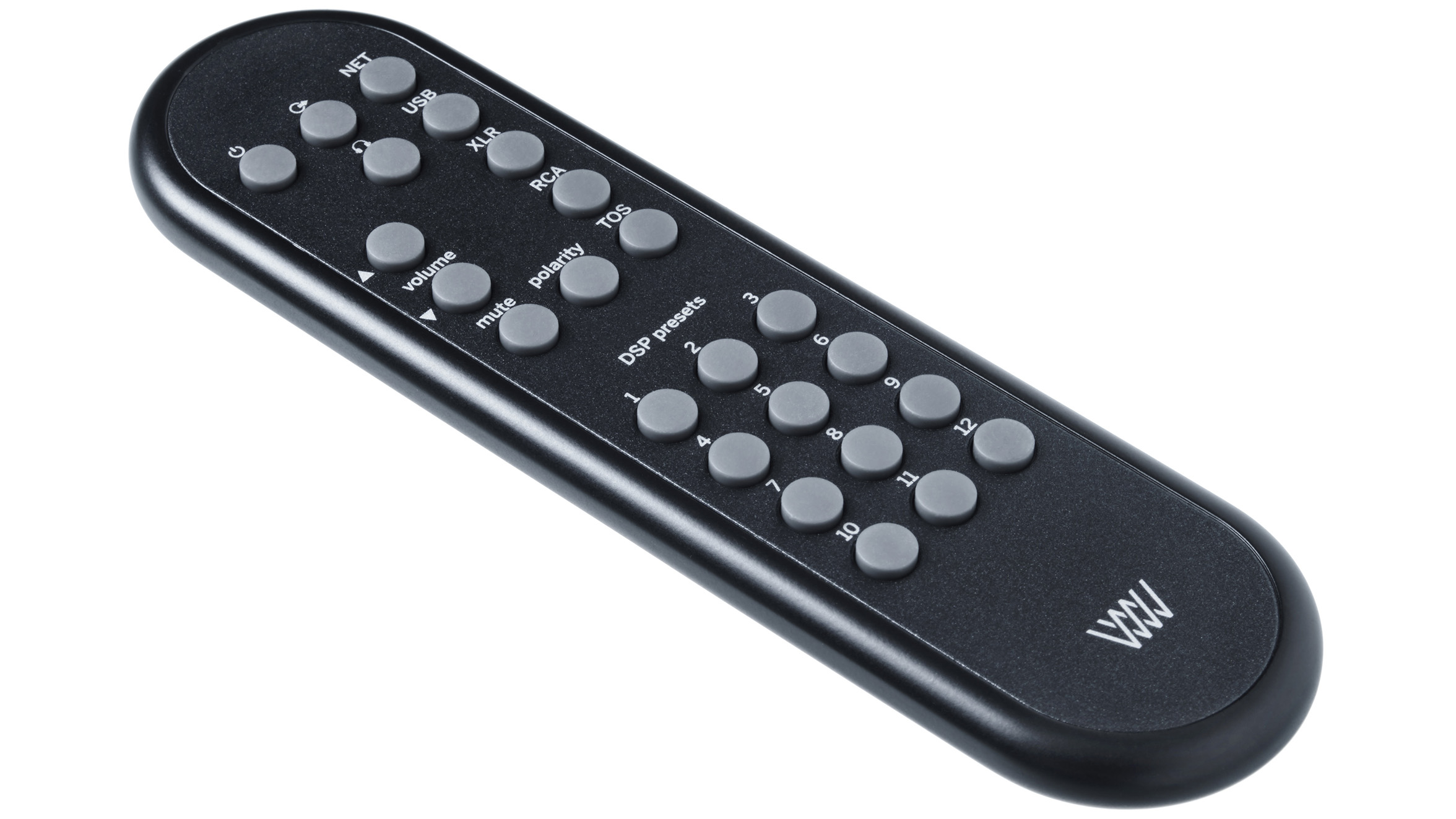
Or, to put that another and rather better way, this is the very first time I have not ‘heard’ a DAC in my system. Whereas every other DAC I have ever reviewed has imposed its particular sonic signature on the audio signal passing through it, such as to modify the sound in some way, the Weiss DAC 502 had absolutely no influence at all on the sound of the music going passing through it.
So ultimately, it was as if my amplifier and my loudspeakers were connected via a direct line to the recording studio. I was hearing what the engineer was hearing, except through my own amp and loudspeakers. (And considering the quality of the amplification and loudspeakers used in some studios, I was definitely the one hearing the more accurate representation of the music).
The best way to prove this to yourself, of course, is by listening to the Weiss 502 using your favourite music tracks, ones that you know the sound of well, because they will almost certainly be different to the tracks I used. It also helps if you play recordings of instruments the live sound of which you know intimately.
For example, I am most familiar with the sound of the piano on its own, so I do a great deal of my critical listening by playing solo piano compositions. I nearly always start by listening to Claude Debussy’s La Cathédrale Engloutie (The Submerged Cathedral), which is the tenth work in Book I of his famous Preludes. I like the recording Paul Jacobs made for Nonesuch in the 70s, but this could be difficult to find. Luckily, it’s such a famous work that almost every world-famous pianist has recorded it. If you can’t find Paul Jacobs, I would instead suggest Krystian Zimerman on DG.
Debussy based this work on the ancient Breton legend of Ys, a mythical city off the coast of France that was submerged then rose from the sea, only to sink back once more beneath the waves.
The musical impressionism is uncannily precise; you can hear the lapping of the water in the sea at the beginning of the work. If you’re listening via the DAC 502, pay careful attention to the very lowest notes and the sonorities of the piano strings, as well as to the tinkling right-hand figurations. Then listen to the gradually increasing volume as the cathedral starts rising from the depths and to how the pianist starts hammering those low notes, and the way the Weiss responds so beautifully.
At around 3.59, where the sound of the piano disappears almost completely, you can hear the total lack of noise from the DAC 502, and also that despite the low volume, the tone of the piano remains exactly the same. As the work comes to a close and the cathedral sinks once more under the water, listen to the way the sustained pedals mean that the sounds just continue to overlay each other, submerging the original notes which are still, however, audible, so you’re essentially aurally following the cathedral down into the depths.
This work is unique for many reasons, one of which is that you can hear how Debussy’s own piano (a Pleyel) would have sounded playing it by listening to Japanese pianist Hiroko Sasaki’s version, which she plays on a Pleyel piano built in 1873. Another of the reasons is that you can actually listen to Debussy himself playing it by searching out the version he recorded in 1913 for a piano roll that was subsequently transferred to LP. Of course the player-piano technology of the day limits what you’ll hear, but it’s very interesting to hear his tempi.
I then listened to a wonderful recording of works written in the last century by American pianist and composer Amy Beach, recorded on the Gould label by Kirstin Johnston. I listened to the third disc in Johnson’s series of recordings ‘The Mature Years’ which contains all the works Beach wrote between 1907 and 1924. Her Prelude and Fugue, Op. 81 is simply magnificent, as is her Fantasia Fugata, but the smaller works on this album are extraordinarily beautiful.
I am embarrassed to say that I had not even heard of Amy Beach until a year or two ago and am rather disappointed that the works of such an extraordinarily great composer are so hard to obtain. Trust me, it will be worth your while searching out what you can of hers! And if you listen to whatever works you can locate via the Weiss DAC 502 you will be doubly rewarded, because the intricacies of the compositions and the delicacy of the pianism will be revealed in all their glories.
Listening to more modern Aussie fare the DAC 502 had absolutely no issues delivering not only the totally synthesised sounds on Kevin Parker’s album ‘The Slow Rush (Tame Impala)’ from back in 2020 but also the real instrumental sounds, of which there are many more than there were on, say, ‘Currents’.
However, it did reveal that Parker should really have re-recorded the bass-lines on Borderline (unless he was aiming for distortion, which is possible, because he’s an admitted fan of lo-fi) and should have also re-mixed Posthumous Forgiveness to get rid of the weird phasing effects (though again, maybe these effects were intended). Either way, the Weiss DAC 502 will reveal all!
But you also need to listen past the sonics, be they hi-fi or lo-fi, to the music itself, which is masterful. Listen to the keyboard loop on On Track, for example, or the siren sound on It Might Be Time. As for that piano melody on Breathe Deeper, it marks that we’re in the presence of genius. And the way the percussion propels this track to its sudden conclusion is so, so clever.
The elephant in the room regarding the Weiss DAC 502 (and 501) is that unlike most high-end DACs, which offer choices of multiple output filters – fast roll-off, linear phase; slow roll-off, linear phase; fast roll-off, minimum phase; slow roll-off, minimum phase; apodizing, fast roll-off, linear phase etc for PCM data and a choice of low-pass filters for DSD data – the Weiss DAC 502 offers none of these.
It also doesn’t offer MQA, if this is a deal-breaker for you (it certainly isn’t for me). It does, however, have Roon. But as I hope I have made clear by my comments about the sound quality, I am totally happy with the choice Daniel Weiss has made for the output filter (whatever it is) on the Weiss DAC 502 because it’s transparent.
Final verdict
The Weiss DAC 502 is the best DAC I have ever heard in my own home yet it’s by far and away one of the least expensive of the ‘high-end’ DACs that I have had in my home.
It not only sounds good, but also has a shed-load of useful features, facilities and adjustments available that make it so much more than just a DAC, plus offers the option to add more in the future.
But I would not buy one. I really don’t want or need a balanced headphone output and I am not that keen on the shape. I’d instead buy the slightly cheaper Weiss DAC 501. As for you, no matter which one of the two you buy, you’ll be the proud owner of the best DAC on earth.
Full lab test results
Graph 1 shows the Weiss DAC 502’s distortion and noise contributions when replaying a 1kHz test signal at 0dB. It’s remarkably good for many reasons.
The first is that there’s almost no mains-related low-frequency noise visible and such noise as there is is close to 120dB down, evidenced by the single spike at the extreme left of the graph that’s almost obscured by the graph line itself.
Then there’s the complete lack of noise. Or rather, such noise as there is is sitting down at –140dB right across the audio band. This makes the DAC 502 quieter than any music signal you might play through it, and quieter than all but a handful of the world’s quietest power amplifiers.
As you can see, there are some distortion components, but the two most prominent are a second harmonic at –112dB (0.00025% THD), and a third at –101dB (0.00089% THD) – all the other harmonic distortion components are more than 120dB down, equivalent to around 0.0001% THD.
Graph 2 shows distortion for a 1kHz test signal at –20dB recorded level, which is more representative of a typical music signal level and you can see that the DAC 502’s performance is absolutely outstanding. I think this may be the best result I have ever seen for a DAC on this test.
Again, note the lack of mains noise at the extreme left and that the noise floor is still 140dB down right across the audio spectrum. And, of course, there’s basically only that single obvious harmonic, a third-order component at 3kHz that’s sitting down at –120dB (0.0001% THD). There are a two odd-order harmonics just creeping above the noise floor at 7kHz and 9kHz but both are more than 130dB down (0.00003% THD).
Graph 3 is a tough test for any digital-to-analogue converter, because the test signal at –60B is not dithered, so it’s going to cause problems for the D–A conversion process, but again the Weiss DAC 502 shows outstandingly good performance with no harmonically-related distortion components visible at all, and all converter errors more than 120dB down.
Graph 4 sees the level of the test signal drop down to –90dB, again without dithering and you can see that the overall noise floor is now more than 140dB down. This time there are some odd harmonics visible but this is an excellent result. It also would not occur in ordinary use because all music signals would be dithered, the result of which is shown in Graph 5.
Graph 5 shows the same test frequency (1kHz) and the same test level (–90dB) but this time the test signal has been dithered. The result is that the distortion components have disappeared completely. The noise level has increased, but since it’s down at –140dB, it’s so low that it’s of absolutely no consequence.
Graph 6 shows how the Weiss DAC 502 handles a 20kHz test signal at 0dB and, once again, I think this is the best result I have seen for any DAC that’s been measured by Newport Test Labs, with just two sampling-related h.f. components, both more than 115dB down in level.
CCIF (twin-tone) intermodulation performance is shown in Graph 7, which has 19kHz and 20kHz test signals, each at –6dB in a 1:1 ratio. Yet again the performance from the Weiss DAC 502 is exemplary with just two high-frequency sidebands at 18kHz (–120dB/0.0001% THD) and 20kHz (–116dB/0.00015% THD). There is a small regenerated difference signal down at 1kHz, but it’s around 125dB down (0.00005% THD).
SMPTE (Society of Motion Picture and Television Engineers) intermodulation performance for the Weiss DAC 502 is shown in Graph 8. This time the two test frequencies are 60Hz and 7kHz and they’re mixed in a 4:1 ratio. There are some tiny sidebands and some sampling-related spuriae visible on the graph, but yet again, all unwanted signals are more than 120dB down (0.0001% THD).
Graph 9 shows the distortion introduced when the Weiss DAC 502 is in its maximum vinyl emulation mode and you can see that it’s significant. There’s a third harmonic at –28dB (3.98% THD) a fifth at –47dB (0.44668% THD), a seventh at –63dB (0.07079% THD) then there’s a spray of odd harmonics that continues right out to the 19th.
These are about the levels of distortion I’d expect to see from a phono cartridge, though it’s rare to see exclusively odd harmonics – most phono cartridges I’ve seen have significant second-order and fourth-order harmonic distortion components in their output, both of which are missing from the Weiss emulation. Basically, if you want to add distortion, the vinyl emulator will do it.
The impulse train of Graph 10 in effect reflects the Weiss DAC 502’s frequency response, showing a steep roll-off above 20kHz due to the test signal being used being a Redbook standard 44.1kHz/16-bit data stream. You can see that the roll-off is exceptionally clean and that there are no unwanted signals at higher frequencies.
Graph 11 shows the typical presentation of a measured frequency response, again with a standard 44.1kHz/16-bit test signal, as measured by Newport Test Labs. The response is ultra-flat up to 2kHz, after which it steps down a little to be –0.08dB at 10kHz, then –0.25dB at 20kHz.
This is an exceptionally linear response whose ‘roll-off’ is visually exaggerated by the extreme vertical scale of the graph. If you use higher sampling rates, the extension increases significantly, so the frequency response is just 2.5dB down at 45kHz with 96kHz data and 7.5dB down at 90kHz with 192kHz data.
Separation between stereo channels was also amazingly good, with Newport Test Labs measuring it as 155dB at 16Hz, 161dB at 1kHz and 148dB at 20kHz. Channel phase was also nigh-on perfect, as you can see from the tabulated chart, and balance between the stereo channels was 0.1dB.
The figures shown in the tabulated chart for de-emphasis error show that Weiss has not included a de-emphasis circuit at all, so you will hear some frequency response errors if you play digital recordings that were made prior to 1990, and in this event, you could correct for it by using the DAC 502’s on-board creative equalisation.
Newport Test Labs has again shown the Weiss DAC 502’s native frequency response in Graph 12 (green trace) but this time has shown the effect of four different settings for the Vinyl Emulator circuit. The red trace shows that the +9.0 setting introduces a low-frequency boost below 500Hz, then a roll-off above this frequency that causes the response to be 5dB down at 20kHz.
The dark blue trace shows that a 0dB setting boosts frequencies below 40Hz, but rolls them off above this frequency to be around 12dB down at 20kHz. The black trace shows the effect of a setting of 9.0: effectively the response above 20Hz is completely rolled off, to end up more than 20dB down at 20kHz.
The light blue trace shows that setting the control to 20.0 delivers an even-more dramatic roll-off, so the frequency response is 10dB down at 250Hz, 15dB down at 1kHz and 20dB down at 3kHz.
Invoking Weiss’s Vinyl Emulation mode also results in considerably increased noise levels in the output, most significantly at low frequencies, as you can see from Graph 13, where the DAC 502’s ‘native’ noise floor is shown as the black trace, where it’s down at –140dB as on all the earlier graphs.
Activate Vinyl Emulation, however, and noise increases to just –60dB at very low frequencies, then gradually decreases to around –120dB at 600Hz where it shelves out to around 3kHz before rolling off to be –140dB at 6kHz.
The spectrograms showing the performance of the Weiss DAC 502 with an impulse response (which exhibits equal pre- and post-ringing either side of the impulse itself), shows that the output filter being used has a medium to steep roll-off, and is a linear phase type. These characteristics are also shown on the square wave response pictured below.
Linearity error was vanishingly low, as you can see on the tabulated chart above. Yet again, I think it’s the best result I have seen in this area for any DAC, ever. At two levels there was no error at all, and the maximum error was a tiny 0.06dB at –80.70dB. It really doesn’t get any better than this.
The same was true of the signal-to-noise ratios measured by Newport Test Labs, with the lab measuring 122dB unweighted, increasing to 128dB with A-weighting.
Maximum output voltage from the balanced outputs is a shade over 6 volts, as you can see from the tabulated results. The –10dB setting delivered an output voltage of 2.12V, the –20dB setting an output of 664mV and the –30dB setting an output of 211mV.
As you’ve no doubt gathered, the Weiss DAC 502 delivered phenomenally good performance across all the tests performed by Newport Test Labs. Across nearly all parameters, the Weiss DAC 502 delivered the best performance I have seen from any DAC… period. A stunning achievement indeed!
Australian Hi-Fi is one of What Hi-Fi?’s sister titles from Down Under and Australia’s longest-running and most successful hi-fi magazines, having been in continuous publication since 1969. Now edited by What Hi-Fi?'s Becky Roberts, every issue is packed with authoritative reviews of hi-fi equipment ranging from portables to state-of-the-art audiophile systems (and everything in between), information on new product launches, and ‘how-to’ articles to help you get the best quality sound for your home.
Click here for more information about Australian Hi-Fi, including links to buy individual digital editions and details on how best to subscribe.
